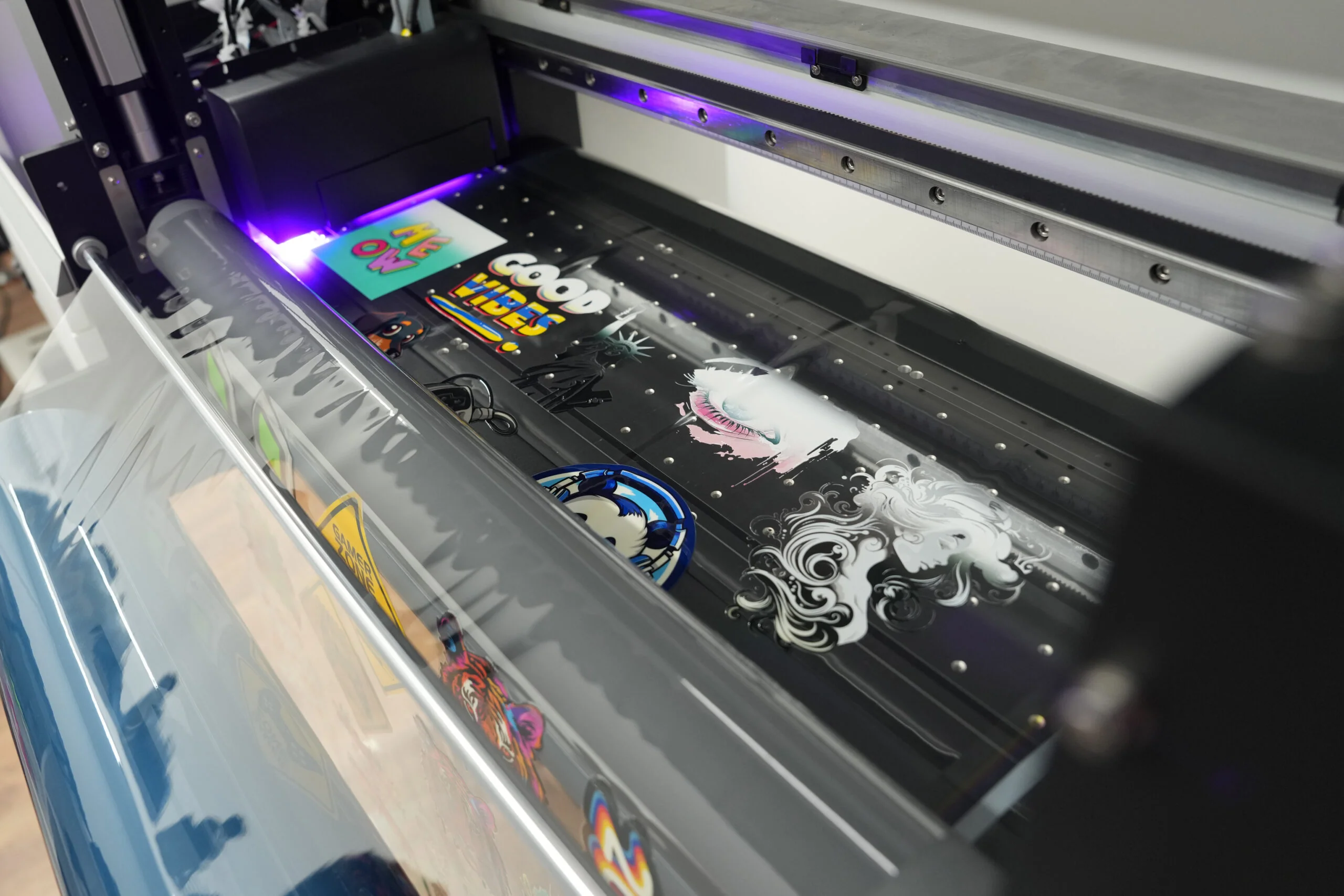In custom printing, picking the right technology is key. It can determine your project’s success. In the vibrant realm of business, personalization can set you apart. If you’re a small business that wants to customize products or a large manufacturer needing clear prints, you should know about UV DTF and traditional DTF printing. As digital printing evolves, a key question arises: which is better—UV DTF or traditional DTF?
The UV DTF printer for cup wrap has become very popular. This tool changes how we use custom designs on curved surfaces and special materials. To really understand the benefits of this technology, we need to look closely at both methods. Let’s examine their features, applications, advantages, and limitations.
What is traditional DTF printing?
DTF, or Direct-to-Film printing, prints designs on a special film. Then, it transfers these designs to fabric or other surfaces with a heat press.
The process typically involves the following steps:
- Print your design onto PET film using a DTF printer.
- Apply a powdered adhesive to the print.
- Cure the adhesive using heat.
- Press the design onto the final product using a heat press.
Advantages of Traditional DTF:
- Excellent for printing on a variety of fabric types (cotton, polyester, blends).
- Cost-effective for medium to large-scale garment printing.
- Produces vibrant colors with excellent wash durability.
- It is easy to scale production once it’s set up.
Limitations:
- Requires many steps, which increase production time.
- Effective on non-textile surfaces, such as glass, metal, or plastic.
- Not ideal for very small custom runs due to setup effort.
What is UV DTF printing?
UV DTF (Ultraviolet Direct-to-Film) printing is a cutting-edge technique. It utilizes UV-curable inks for better results. These inks dry instantly with UV light while printing. The designs transfer using a laminate film, so no heat is needed.
How It Works:
- The design is printed directly onto a special film using UV-curable ink.
- A laminating film is used to lift the print.
- The user peels and sticks the design onto the desired surface.
This process creates high-resolution prints. They stick well to many materials, such as glass, ceramics, plastic, wood, leather, and metal. This makes it very versatile.
Why UV DTF is gaining popularity.
UV DTF printing is the top choice for businesses and creators. It adds style to items like cups, bottles, tumblers, phone cases, and furniture. One main reason is the ability to print bright, full-color designs. This was hard to do with older methods.
Unlike heat-transfer printing, UV DTF doesn’t use heat. This means it won’t warp or damage delicate materials. This creates endless options for customizing products, especially on curved or uneven surfaces.
If you want a strong, accurate, and clean printing solution, UV DTF is a true game changer.
Head-to-Head Comparison
| Feature | Traditional DTF | UV DTF |
| Printing Medium | PET film for textiles | Transfer film for various hard surfaces |
| Ink Type | Water-based pigment ink | UV-curable ink |
| Transfer Process | Heat press | Peel-and-stick laminate |
| Surface Compatibility | Mainly fabrics | Glass, metal, plastic, ceramics, leather |
| Durability | High on fabrics | High on non-porous surfaces |
| Ease of Use | Requires heat and powder adhesive | No heat, simpler process |
| Cost | More affordable for textiles | Slightly higher, but versatile |
| Customization | Best for T-shirts and fabrics | Ideal for cups, bottles, and custom merchandise |
When should you use UV DTF?
You should choose UV DTF if:
- You need to decorate non-textile items like mugs, bottles, or laptops.
- You want a simpler, more direct transfer process without heat.
- Durability and color vibrancy on hard surfaces are important.
A UV DTF printer is great for small businesses. It delivers high-quality, on-demand prints for unique products.
You can find reliable UV DTF printers at dtflinko.com. They offer top-quality printing solutions for businesses of all sizes. Their printers provide great output, easy-to-use interfaces, and reliable performance.
When to Stick with Traditional DTF
Traditional DTF printing is still an excellent choice if:
- Your primary goal is textile printing, especially in bulk.
- You already own a heat press and are set up for garment production.
- Cost efficiency in apparel printing is a priority.
It’s a proven technology that helps businesses, especially in fashion and promotional merchandise.
Final Verdict: Which One Should You Choose?
Choosing between UV DTF and Traditional DTF depends on your project goals and the materials you want to print on. For great versatility, choose UV DTF. It works well on glass, acrylic, and metal. However, for textile-heavy projects, Traditional DTF remains the go-to.
The UV DTF printer for cup wrap is a game changer. It gives users new tools to boost creativity and make production easier.
Whether you’re new to printing or looking to upgrade, choosing the right technology is key. It helps you get professional and lasting results.
